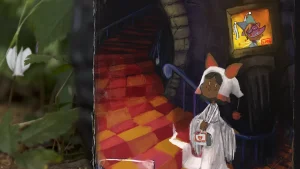Opinion: Fast Fashion Wearing Out the Environment

Like every American teenager, I’ve always enjoyed shopping. Lately, though, my interest in shopping has been getting out of hand. I feel the need to constantly buy new clothes, but I don’t want to spend a lot of time or money on them. My closet has become cluttered with cheap, trendy tops that I only wear twice before shoving away. Looking at the mountain of cheap clothing I have accumulated, I am finally understanding the meaning of “fast fashion”.
Fast, cheap, and disposable has become the new trend of the fashion industry. With 52 “microseasons”, retailers like Forever21, H&M, and Zara push new styles into their stores almost every week, making consumers hungry for the next new look so that they buy more clothes than necessary. The average person buys 64 new items of clothing per year, according to Elizabeth Cline, the author of Overdressed: The Shockingly High Cost of Cheap Fashion.
Stores opt for a business model based on quantity, and sell ton of cheap garments for only a few dollars apiece. To make a profit, they cut production costs by any means necessary.
Fast fashion may seem cheap, but it comes with a very high human cost. That T-Shirt can be sold for $4 because the worker who made it was only paid a few pennies. To produce clothes quickly and inexpensively, fast fashion manufacturers often use overseas sweatshops and even child labor. And most fast fashion garments have abysmal quality, some falling apart after just a few washings.
Not only are the clothes made to die quickly, but the trends are as well. New styles every week leaves the consumer feeling like their garment is out of date just a few weeks after they bought it. The clothes are designed to be thrown away. The disposable nature of fast fashion is putting a strain on the environment.
The average American sends over 68 pounds of textiles to landfills each year, according to an article in The Huffington Post. That Forever 21 shirt worn three days will sit in a landfill for 3,000 years. The low quality fabrics are often made of plastic materials that release toxins when they break down. May dyes used are also toxic.
There are several sustainable alternatives to fast fashion. Thrift stores and consignment shops are full of great finds that are easy on both the environment and the wallet. Friends can also organize a clothing swap with each other so they can all get nice new-to-you pieces.

Marlaina is a sophomore who loves to read and write. In junior high, she wrote for the East Observer, but thinks writing for the BASH Cub is much more...





















